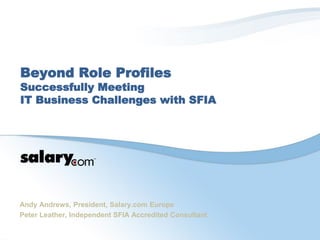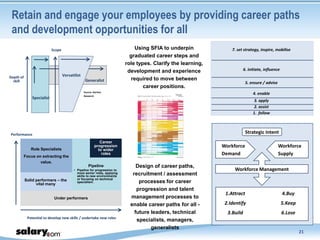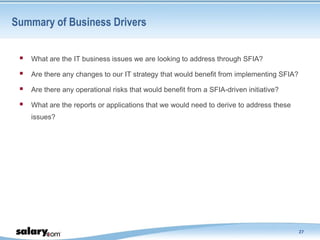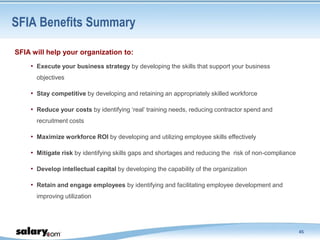The document presents an overview of the Skills Framework for the Information Age (SFIA) and its applications in managing IT skills, with contributions from industry experts Andy Andrews and Peter Leather. It discusses the importance of SFIA in developing a skilled workforce, improving project success, enhancing employee retention through career development opportunities, and aligning skills with organizational strategies. Additionally, it outlines the benefits of implementing a skills framework, including better resource management, talent planning, and risk mitigation.
















































